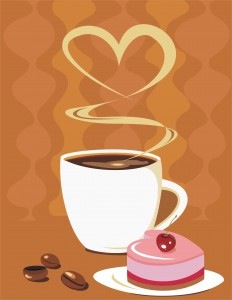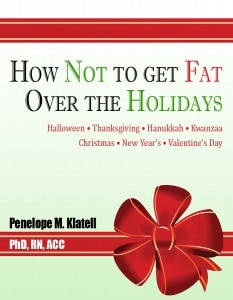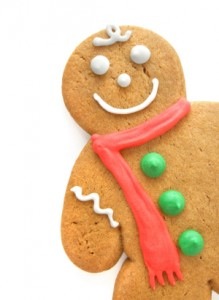 The earliest recorded celebration of the arrival of the new year dates back 4,000 years ago in ancient Babylon. The first new moon following the vernal equinox, or the day in the spring with an equal amount of sunlight and darkness, signaled the start of a new year.
The earliest recorded celebration of the arrival of the new year dates back 4,000 years ago in ancient Babylon. The first new moon following the vernal equinox, or the day in the spring with an equal amount of sunlight and darkness, signaled the start of a new year.
Today, New Year’s Day–the first day of the calendar year–is celebrated in almost every country in the world, but depending the type of calendar, not all countries or cultures welcome the New Year on January 1st. The Chinese, Egyptian, Jewish, Roman, and Mohammedan years all have different start dates.
January 1 was recognized as New Years Day in the 1500’s with the introduction of the Gregorian Calendar. In 1582 most Catholic countries adopted the Gregorian calendar but the British didn’t adopt it until 1752. Until then the British Empire and their American colonies celebrated the new year in March.
Some Traditions and Legends
- In ancient Rome the first day of the New Year honored Janus, the god of gates, doors, beginnings and endings. Janus had two faces. One looked ahead to see what the new year would bring and the other looked backward to see what had happened during the past year. To celebrate, the Romans gave gifts to friends and family members –and sometimes to Senators in exchange for favors.
- Druid priests In England celebrated the New Year on March 10. They gave branches of mistletoe to people for charms. Later on, English people cleaned their chimneys on New Year’s Day believing that this brought good luck to the household for the coming year (which is where the expression “cleaning the slate” comes from).
- In many countries people eat specific foods to bring good luck for the coming year. In Spain they eat grapes, round fruits in the Philippines, suckling pig in Austria, soba noodles in Japan, rice pudding in Norway, black-eyed peas in the southern US, and cake with a hidden coin in Greece. Other common worldwide customs are making resolutions–which dates to the Babylonians, and watching fireworks.
- Chinese New Year, an all East and Southeast Asia celebration, is known as “Spring Festival” in China. Filled with tradition and ritual it’s usually considered the most important traditional holiday for Chinese around the world. It begins on the first day of the first month in the traditional Chinese lunar calendar and is celebrated with lucky red envelopes filled with money, lion and dragon dances, drums, fireworks, firecrackers. Traditional sweet sticky the last course rice cakes and round savory dumplings symbolize never-ending wealth. On New Year’s Eve the meal includes fish to symbolize abundance. In the first five days of the New Year people eat long noodles to symbolize long life and round dumplings shaped like the full moon to represent the family unit and perfection.
Some New Year’s Eve Tips
If you have big plans for New Year’s Eve, enjoy yourself by devising an eating strategy before you go out and committing to carrying it out. If you’re watching your weight, have a plan – you can still enjoy yourself and not feel deprived. With a plan you design just for you, you’ll have a much better chance at succeeding – and not end up hating yourself and cursing the scale on the first day of the New Year. Here are some ideas:
- If you’re going to a party with lots of hors d’oeuvres decide beforehand how many you’ll have. Three varieties, one of each? Two varieties, two of each?
- Alternate your drink of choice – wine, champagne, liquor – with sparkling water to cut calories, help with sobriety, and make it easier for you to resist food temptations. Hold that glass of sparkling water or diet soda in your hand – the only people who will know it’s non-alcoholic is you and the bartender (who most likely could care less about what you are drinking).
- If you’re going to dinner decide if you’re going to have dessert ahead of time. If you are going to indulge – even if it’s the house specialty smothered in whipped cream — compensate by having a salad with dressing on the side as your appetizer. Nix the bread. Just balance your caloric intake the best you can.
- If it’s a pizza, wings, and beer affair think about ways to minimize your fat intake – pizza and wings (especially the dip) are loaded. Cut the pizza slice in half – leave the other half in the box. When you go back for seconds, retrieve the other half slice. You’ll end up eating just one slice but feel like you’re having two. If you can, take off some of the cheese – the main source of fat. Some people use paper towels or napkins to absorb some of the extra fat floating on the surface of a slice. Up to you – but it really cuts down on calories – mopping up the equivalent of two teaspoons of oil knocks off just under 100 calories.
How Far You’d Need To Walk to Burn Off A New Year’s Party Calories
If you go to a New Year’s party and have:
- one Irish coffee
- one glass of wine
- one cup of coffee with cream and sugar
- one cup of eggnog
- one 3 oz Stinger
- 5 large olives
- half a cup of mixed nuts
- one oz of potato or tortilla chips
- one teaspoon of chip dip, a mini-quiche
- 2 oz of boiled shrimp with cocktail sauce
- two chocolate mints
- one slice of pecan pie with half a cup of ice cream
- one small piece of fudge
- one iced gingerbread cookie
you would have consumed 27030 calories and you would need to walk 27.03 miles, or 54060 steps (assuming you cover one mile in 2,000 steps) to burn off those calories.





